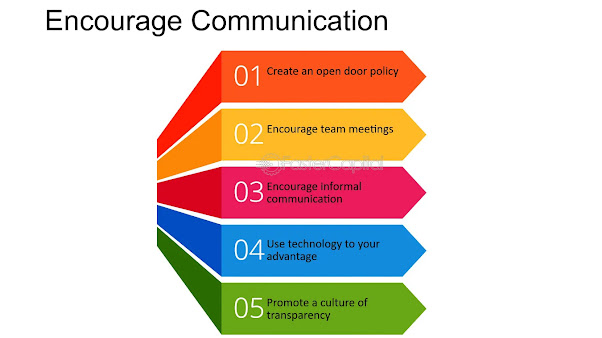In today's fast-paced business world, cultivating a positive company culture is no longer a luxury; it is a requirement. A good company culture boosts employee satisfaction and engagement while also driving productivity, innovation, and, ultimately, business success. As HR leaders, we must take proactive actions to build and nurture a positive workplace culture. Here are some strategies to consider.
- Define Core Values: Begin by identifying the core values that represent the organization's identity and principles. These principles should influence employees' behavior, decisions, and relationships both within and externally.
figure 1:"Steps to Define Core Values in Company and the Ideology
Behind It"keka.com
2.Lead by Example: HR executives must model the desired culture through their actions, decisions, and communications. Consistency and honesty are critical in establishing the tone for the entire organization.
3.Encourage open communication avenues for employees to share ideas, issues, and comments. Actively listen to employee viewpoints and swiftly handle any issues that arise.
figure 2: "Encourage Communication - Key Steps to Motivate Employees to Finish Work Projects"fastercapital.com
4.Recognize and reward employee accomplishments, milestones, and contributions. Implement reward schemes that encourage desired behaviors and outcomes in line with the corporate culture.
5.Promote Cooperation and Teamwork: Offer opportunities for interdepartmental cooperation, team-building exercises, and common objectives. Encourage a sense of unity and belonging among your staff.
6.Invest in Employee Development: Provide chances for mentorship, training, and career development to encourage ongoing learning and development. Enable staff members to realize their greatest potential inside the company.
7.Make Work-Life Balance a Priority: Encourage a healthy work-life balance by providing tools to assist employee well-being, wellness programs, and flexible work schedules. To avoid burnout, respect boundaries and promote relaxation.
figure 4:The Importance of Work Life Balance - "Work life balance: Finding Harmony through the 1 80 20 Rule"fastercapital.com
8.Embrace Diversity and Inclusion: Promote an inclusive and diverse workplace where each person is empowered to share their distinct viewpoints and feels appreciated and respected. Encourage diversity programs and deal with misconceptions to make the workplace more fair.
9.Get Employee input: Using focus groups, surveys, or one-on-one conversations, regularly get employee input. Utilize this input to pinpoint areas that need work and inform data-driven choices that will strengthen the corporate culture.
10.Adjust and Change: The culture of a company is dynamic and subject to change. Maintaining a healthy and vibrant work culture requires you to be aware of shifting dynamics, market trends, and employee needs. You should also be prepared to modify your strategy as necessary.
Conclusion
HR directors may significantly contribute to the development of a corporate culture that draws top talent, encourages employee engagement, and propels organizational success by putting these methods into practice. Recall that creating a positive workplace culture is a continuous process that calls for cooperation, devotion, and commitment from all organizational levels.
References
- Denison, D. R. (1990). Corporate culture and organizational effectiveness. John Wiley & Sons.
- Sinek, S. (2009). Start with Why: How Great Leaders Inspire Everyone to Take Action. Portfolio.
- Cameron, K. S., & Quinn, R. E. (2011). Diagnosing and changing organizational culture: Based on the competing values framework. John Wiley & Sons.
- Gostick, A., & Elton, C. (2011). The carrot principle: How the best managers use recognition to engage their employees, retain talent, and drive performance. Simon and Schuster.
- Brown, B. (2018). Dare to Lead: Brave Work. Tough Conversations. Whole Hearts. Random House.





.jpeg)




Building a positive work culture is essential in a company to boost it productivity and performance. Well research and presented the topic.
ReplyDeleteGood article with nice explanation
ReplyDeleteHaving a Positive culture affects profitability directly and it will influence brand image
ReplyDeleteImpressive insights on fostering a positive company culture. Practical strategies for HR leaders to enhance employee satisfaction and drive business success. Well-articulated and actionable advice
ReplyDeletewell organised article.good work
ReplyDeleteGood article ,well explanation about strategies for HR leaders
ReplyDeleteYou have provided a clear and practical overview of the key strategies and best practices for building a positive company culture, including defining organizational values, providing developmental opportunities for employees, offering recognition and rewards, and promoting work-life balance.
ReplyDeleteThis post pointing out strategies for HR leaders to build a positive company culture, emphasizing its importance in today's business landscape. It suggests defining core values, leading by example, promoting open communication, recognizing employee contributions, encouraging teamwork, investing in employee development, prioritizing work-life balance, embracing diversity and inclusion, seeking employee input, and being adaptable to change. These strategies aim to foster employee satisfaction, engagement, and ultimately, organizational success, highlighting the ongoing effort required to maintain a positive workplace environment.
ReplyDeleteThe strategical leadership approach mentioned on this article is spot on and its benefits for a sustainable growth of any organization is crucial. Receiving employee input and embracing the diversity And inclusion place a pivotal part in leadership in HR. Benefits of employee rewards program has been very attractively summarized
ReplyDeleteNicely explained
ReplyDeleteGood explanation
ReplyDelete